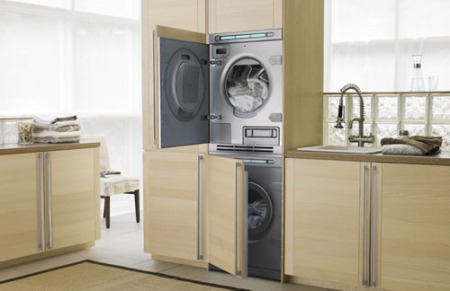| appliance resource center |
washer vibration leaving your laundry room all shook up?

Front-loading washers have been available long enough now that we’re replacing more and more first generation units of the now ubiquitous style of washing machines.
Front-loader washers clean better, use less water and spin more water out of the clothes with spin speeds around 1200 RPMs. But all those rotations made some customers’ experience with the earliest models a bit, well, shaky.
The washer would vibrate. It would move. Customers would call and say, “My washer is walking across the floor!” Things would fall off the walls. We heard of an extreme case in which a customer’s sheetrock shook loose.
Of course, it wasn’t solely the washers’ fault. People pulled washers and dryers out of the basements they were designed for, reinforced with their sturdy concrete block, and put them where they were never supposed to go: upstairs. Empty nesters converted their children’s former closets on the second floor and ended up chasing runaway machines. Families tucked laundry units into main floor kitchens without reinforcing the floors.
The problems were real for some. Fortunately, those problems came out in the wash as most manufacturers since beefed up the suspensions of front-load washers.
So your friends’ warnings about front-load washers likely are moot dangers. You should still reinforce the floors if you’re converting a space for laundry, and if so, pedestals might not be the best bet*, but several manufacturers now guarantee that you’ll be happy putting their front-loader on your main floor.
If your existing washer is on the move, pick up a vibration isolation pad, like ShakeAway, at your local appliance parts dealer. I like Dey Appliance Parts, because I’ve had the number to its Snelling Avenue outfit memorized for about eight years now: (651)647-0171.
*Miele’s pedestals attach to the laundry units with bolts, making it the safest bet for elevated laundry on uncertain surfaces